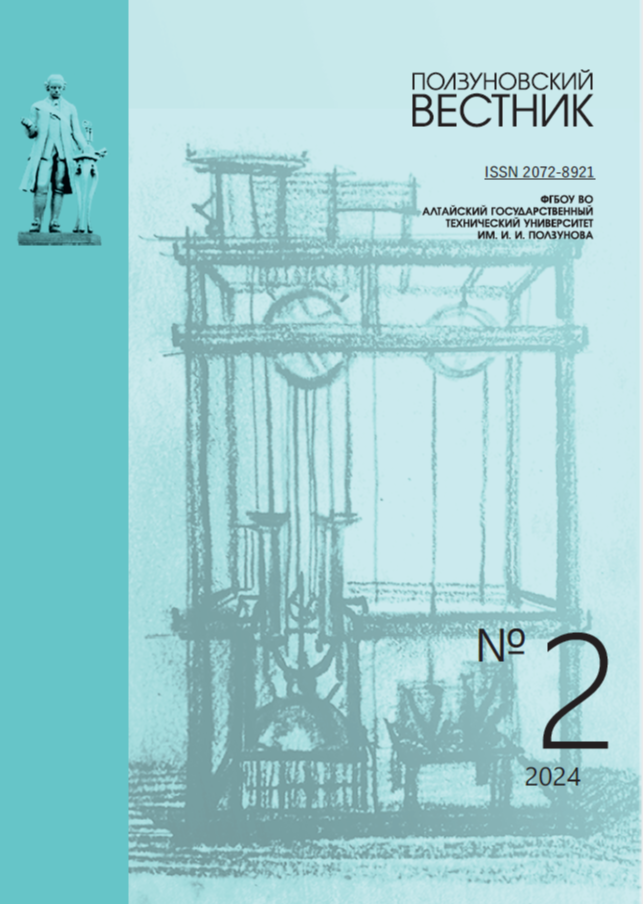REDUCING THE RATE OF STALING OF BAKERY PRODUCTS MADE OF WHEAT FLOUR
NODQEX
DOI:
https://doi.org/10.25712/ASTU.2072-8921.2024.02.012Keywords:
Wheat flour, rye unfermented malt, wheat bread, optimization of the state of the carbohydrate-amylase complex of flour, indicators of rheological properties of wheat dough, crumb texture indicators, staling rate.Abstract
The article presents the results of research on reducing the rate of staling of bakery products during storage based on optimizing the rheological properties of wheat dough during its preparation by introduc-ing a rational dosage of white unfermented rye malt "Granary". The introduction of rye malt in an amount of 1.62% ensured a decrease in the "number of drops" from 566c to an optimal value equal to 235c, which eventually led to a decrease in the rate of staling of bread crumb from 166gs / day to 92gs / day. The multiparametric instrumental control of the physico-chemical characteristics of wheat flour, dough and wheat bread crumb used in the work allowed us to establish the value of the amylogram index – the maximum viscosity of the gelatinized suspension equal to 380 ± 10e.AU and pharynogram indicator – dilution of the dough equal to 75 ± 5e.F., which determine the optimal depth of hydrolysis of starch grains during dough maturation and bread baking, which determines the minimum rate of transition of the amorphous structure of starch into a crystalline state during the storage of bread and thereby minimize the rate of staling of its crumb. The structural and mechanical characteristics of wheat bread crumb were determined in accordance with the requirements of GOST 70085-22 "Bakery products made of wheat baking flour. A method for determining the degree of callousness." The rate of change in the crumb hardness index during the shelf life is taken as the crumb staling rate.
References
Черных В.Я., Ширшиков М.А., Белоусова Е.М., Лущик Т.В. Информационно-измерительная система для оценки хлебопекарных свойств муки. Хлебопродукты. №8. 2000. с.21-25.
Черных В.Я., Ширшиков М.А. Технологические критерии оценки состояния углеводно-амилазного комплекса пшеничной муки (начало). Хлебопродукты №12, 2001. с. 22-25.
Черных В.Я., Ширшиков М.А. Технологические критерии оценки состояния углеводно-амилазного комплекса пшеничной муки (окончание). Хлебопродукты №1, 2002. с. 21-24.
Черных В.Я., Иванов В.С. Регулирование сахарообразующей способности хлебопекарной муки. Монография, М.: ООО «Буки Веди», 2019г. - 144с.
Черных, В.Я. Влияние продолжительности хранения хлебобулочных изделий на показатели твердости и эластичности мякиша / В. Я. Черных, В. В. Кононенко, А. С. Максимов // Хлебопечение России. – 2020. – № 2. – С. 19-27. – DOI 10.37443/2073-3569-2020-1-2-19-27.
Sluková, M., Kubín, M., Horáčková, Š., & Příhoda, J. (2015). Application of amylographic method for determination of the staling of bakery products. Czech Journal of Food Sciences, 33(6), 507–512. https://doi.org/10.17221/184/2015-CJFS
Karim, A. A., Norziah, M. H., & Seow, C. C. (2000). Methods for the study of starch retrogradation. Food Chemistry, 71(1), 9–36. https://doi.org/10.1016/S0308-8146(00)00130-8
Haghighat-Kharazi, S., Reza Kasaai, M., Milani, J. M., & Khajeh, K. (2020). Antistaling properties of encapsulated maltogenic amylase in gluten-free bread. Food Science and Nutrition, 8(11), 5888–5897. https://doi.org/10.1002/FSN3.1865
Gray, J. A., & Bemiller, J. N. (2003). Bread staling: Molecular basis and control. Comprehensive Reviews in Food Science and Food Safety, 2(1), 1–21. https://doi.org/10.1111/J.1541-4337.2003.TB00011.X
ГОСТ Р 70085-2022. Изделия хлебобулочные из пшеничной хлебопекарной муки. Метод определения степени черствости
Downloads
Published
How to Cite
Issue
Section
License
Copyright (c) 2024 Valery Ya. Chernykh, Marina N. Kostyuchenko, Khachatur A. Baluyan, Dmitry O. Smetanin, Roman Kh. Kondrakov

This work is licensed under a Creative Commons Attribution 4.0 International License.















 .
. This work is licensed under a
This work is licensed under a 
